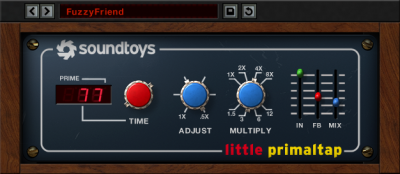
It wraps decades of echo device history and new forward-thinking features into one versatile effect that will find its way into every corner of your mixes. If you want warm, smooth saturation, try the “Studio Tape” style, inspired by the Ampex ATR-102 half-inch two-track machine. EchoBoy’s chorus even emulates the CE-1 chorus, considered a holy-grail of guitar chorus pedals. Get instant access to a whole range of classic echo box tones, including EchoPlex, Space Echo, Memory Man, DM-2, and the TelRay oil can delay. You may have heard Little Alterboy on Fenneas‘s work with Bille Eilish:ĭecades of echo devices in a single plug-in. You can even control the vocal’s melody using MIDI for creative vocoder-like effects. Lock onto a single pitch for robotic sounds. Change the pitch of a voice, or change the singer’s gender with formant shifting. Get a huge range of vocal transformations from one simple plug-in. Little AlterBoy is Soundtoys’ exciting new tool for dramatic voice alteration.

I use it like a channel preamp to boost my signal and get some warm but crunchy analog saturation. Subtle to extreme hardware-modeled saturation.
LITTLE RADIATOR SOUNDTOYS FULL
So, I really wanted to check out their full line of products and give them a try. I had heard several people talk about Soundtoys plug-ins like the Decapitator and the Little AlterBoy including Trent Reznor, Atticus Ross, Finneas, Zedd, and more. and one company kept coming up – Soundtoys. In addition, I passed Radiator through a Hammerstein module and a 2D Spectrogram to trace the amplitude of the harmonics across the frequency range of the plug-in.While recently setting up the new studio in my place I started reading articles about current music production and what people are using these days as far as Digital Audio Workstations (DAWs), plug-ins, mics, etc. To analyse the non-linear behaviours of Radiator, I ran a 100 Hz sine wave through the plug-in at various settings. This means that, true to the original unit, additional saturation of the signal can be achieved through boosting the output. Output determines the level of post-tone audio entering the second stage of saturation before being fed into the wet/dry mix. The frequency response behaviour mirrors that of the original 1567A with a wide curve for bass frequency cut and more of a sloping boost. Noise is quite audible, I generally use Radiator in clean mode but if you want a bit of noise perhaps consider plug-in order, and insert Radiator post compression.īoth the Bass and Treble controls allow for a +/-10dB boost/cut. Radiator Line Circuit at Unity with Noise Engaged It averages -68dBu at the maximum measured settings, and is reduced by 10dB with the “Line” source selected. The 1567A has a significant amount of circuit noise even at low saturation levels, and this noise was modelled and included in Radiator.



The Mic and Line modes represent the differences in behaviour observed with a 150ohm impedance (Mic) vs. The Altec 1567A has a very impedance dependent response in regards to the input. The Input control determines the amount of drive into the first tube saturation stage. Finally, the processed signal is fed into the Wet/Dry mixer. After the tone controls, the signal reaches the second saturation stage. The signal then flows into a 2-band EQ section with Bass and Treble controls. The input signal is fed into the first tube saturation stage with the drive level determined by the input control. It featured removable transformers, a simple two-knob EQ, and a whopping 97 dB of gain! Radiator is based on the Altec 1567A, the original hardware, introduced in the early 1960s, which was a rack-mounted five-input tube mixer. Radiator was designed for adding warmth and grit turning up the HEAT on your mixes.


 0 kommentar(er)
0 kommentar(er)
